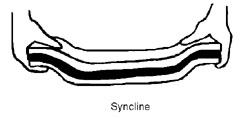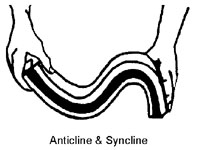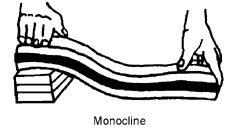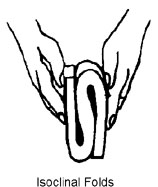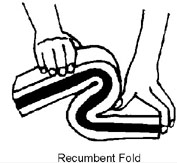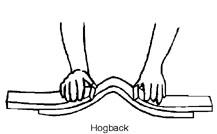
A D I V I S I O N O F E K L A V Y A E D U C A T I O N F O U N D A T I O N
| Code: TLM-Sc-004 | Age: 9-16 yrs | Name: Geology Demonstration Kit |
| Syncline: It is defined as the trough of a fold. The part of a fold that moves down is termed as the syncline. (Syn same, cline direction) To illustrate a SYNCLINE a trough ("downward arch") is formed by rock layers that have been bent downward:
To illustrate both an ANTICLINE and SYNCLINE:
Monocline: When folding takes place in very small magnitude or at a very small angle a monocline is formed. Here the limbs are almost horizontal.
Isoclinal folds: In this type of fold the limbs are parallel and bending at the same angle (Iso - same).
|
Recumbent: It is formed when the pressure continues from one side only and one limb of the anticline bends and comes over the other. To illustrate a RECUMBENT FOLD a fold is made in which the sides or limbs are practically horizontal:
Hogback: This is an eroded anticline. Here both the limbs lie at a very steep angle. It remains as a ridge.
Faulting: A fault is defined as a crack or fracture along which one side of the rock moves down or up relative to the other. It is formed due to the tensional movement (movement apart) of the earth's crust. Example The Narmada Valley is a faulted valley. |
